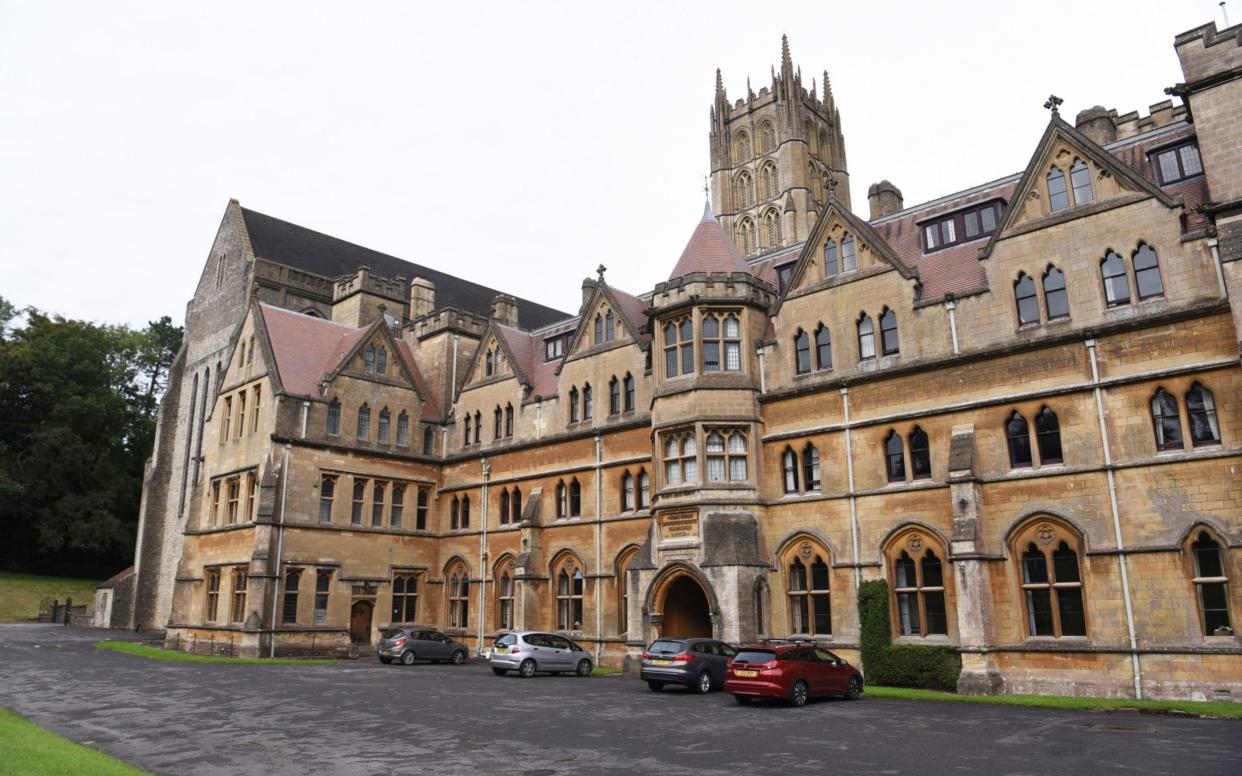Monks to leave Downside Abbey after 200 years following school’s child abuse scandal

It has been home to one of the country’s leading Benedictine abbeys ever since monks sought refuge in Britain after fleeing persecution from French Revolutionaries in mainland Europe.
But after more than two hundred years, the community of monks are to leave Downside Abbey in the wake of a child abuse scandal and cover up that lasted almost half a century.
Dom Nicholas Wet, the Abbot of Downside, admitted he feels “great sorrow” about leaving but said that the decision came after months of discussions.
“It has been a long process of discernment for the community,” he told The Daily Telegraph, adding that teaching at schools is “not our main focus any more”.
The abbey officially split from Downside School, a leading Catholic boarding school in Somerset, last September after a report the previous year recommended that monks should be stripped of control at the school.
A damning report published by The Independent Inquiry into Child Sexual Abuse (IICSA) in 2018 found that leaders at Ampleforth in North Yorkshire and Downside hid allegations of "appalling" abuse against pupils as young as seven to protect the church's reputation.
The two schools which are both linked to Benedictine monasteries were run at times by "secretive, evasive and suspicious" church officials who avoided reporting misconduct to police and social services, the report said.
The inquiry found that sexual abuse spanning four decades at both schools was likely to be "considerably" more widespread than previously thought.
Both must implement a “strict separation” between the governance of the abbey and the school, if safeguarding arrangements are to be free from “often conflicting priorities”, the report concluded.
Allegations stretching back to the 1960s encompassed "a wide spectrum of physical abuse, much of which had sadistic and sexual overtones", it said.
Ten individuals linked to the schools, mainly monks, have been cautioned or convicted over sexual activity or pornography offences involving a "large number of children".
Abbot Wetz said that by leaving Downside, the monks are not attempting to “escape” from the abbey’s difficult past.
“This is certainly a new start,” he said. “The members of the community now are not those who are mentioned in IICSA – but you can’t walk away from that sort of history.
“It will be on the mind of the community here with great sadness. What happened was awful to the victims and survivors and they are conscious of that. This is not a case of ‘we will move and forget it all’. We will be thinking of that for many years.”
He said that the principal reason for the move is, in fact, financial, explaining that the monks simply cannot afford to stay in such large and grand premises.
“The main driver is that this is a building we have been in for over 200 years and we are now eight resident monks rattling around a 60 bedroomed monastery, the sheer cost of that….things that are old begin to break down, finding money for a new boiler becomes difficult,” he said.
“It’s the changing face of society today, it is more secular, there are fewer people going to church, there are fewer people who want to become monks. There are other monasteries and we are all competing for them.”
But another reason they are in financial difficulty is due to the huge sums of money they spent on legal fees during the IICSA inquiry as well as the administrative costs of splitting from the school.
“Undoubtedly the cost of the separation depleted our reserves completely, as did the IICSA inquiry,” Abbot Wetz admitted.
He said that the Downside monks are not yet sure when or where they will go, but they are hoping to either join an existing Benedictine abbey or set up a new one.
They also do not want to leave until they have made arrangements for the Grade I listed church and other buildings at Downside to be left in safe hands.
“We can’t just abandon the buildings here, we need to make sure someone will take them on,” Abbot Wetz said.
“We have a beautiful church, a library, the monastery itself, the rooms…we have to cover them first. We want the beautiful church to remain as a church.”
Downside Abbey Church, one of only three Minor Basilicas in England, was described by Sir Nikolaus Pevsner as “the most splendid demonstration of the renaissance of Roman Catholicism in England”.
Following the Dissolution of the Monasteries and anti-Catholic laws in England, Benedictine monks were given sanctuary in Douai – which was then part of the Spanish Netherlands - in 1606.
St Gregory’s, Douai, was the first community of men to revive the English Benedictine tradition and its founders organised a school for English boys.
Fleeing persecution from French Revolutionaries in 1794, the monastery and school moved to Shropshire, the home of a former pupil, before settling at Downside in 1814.

